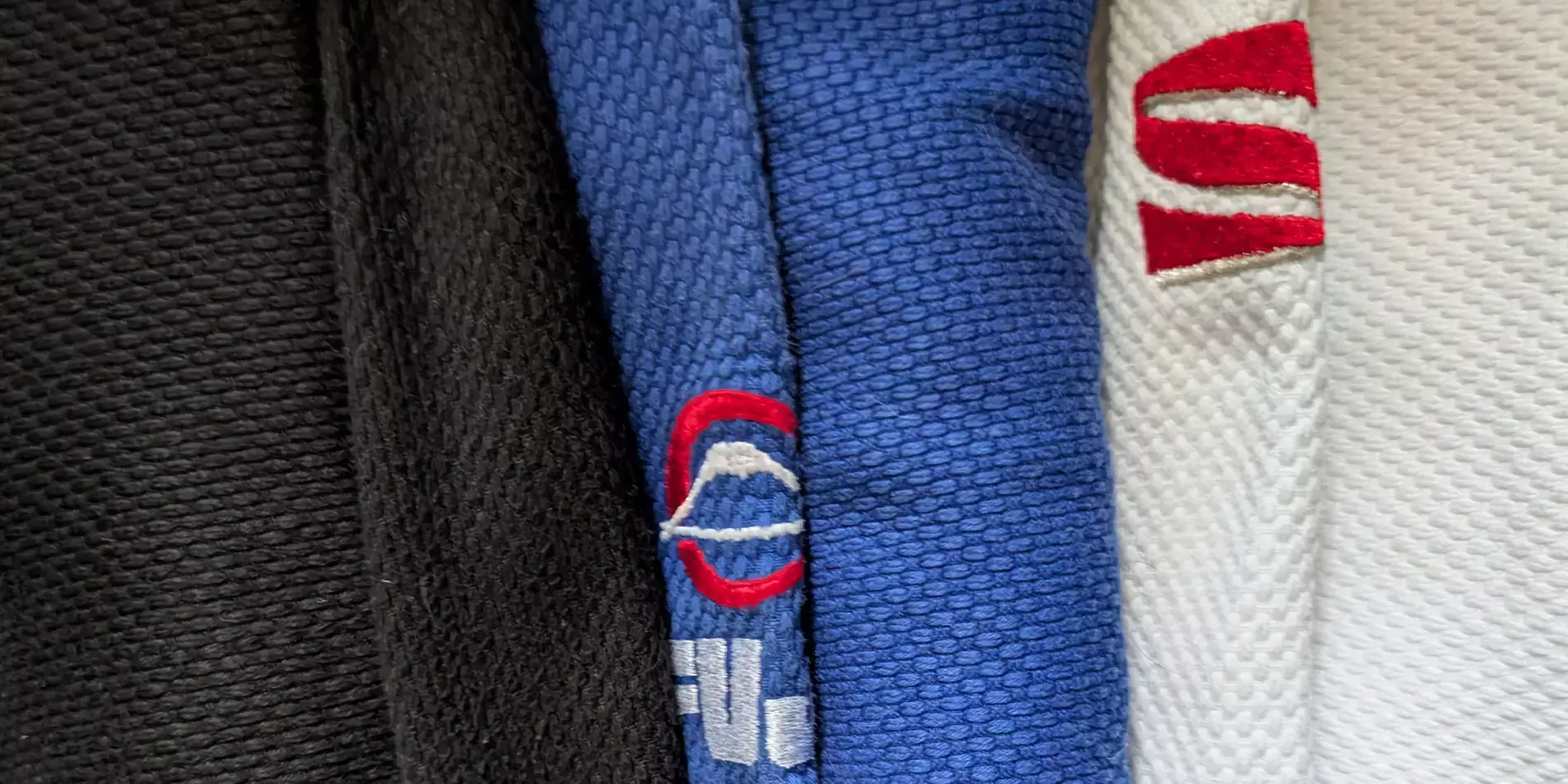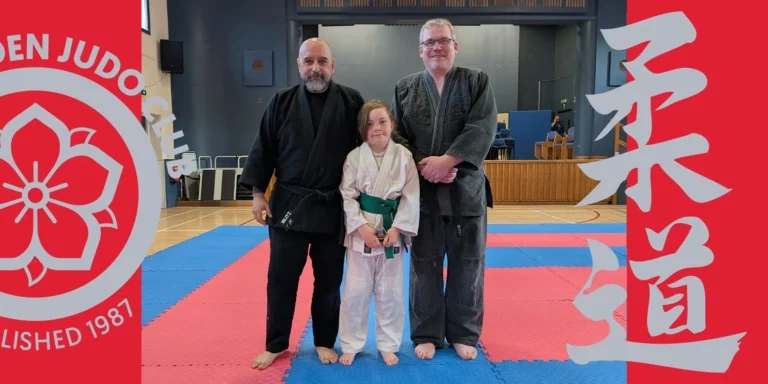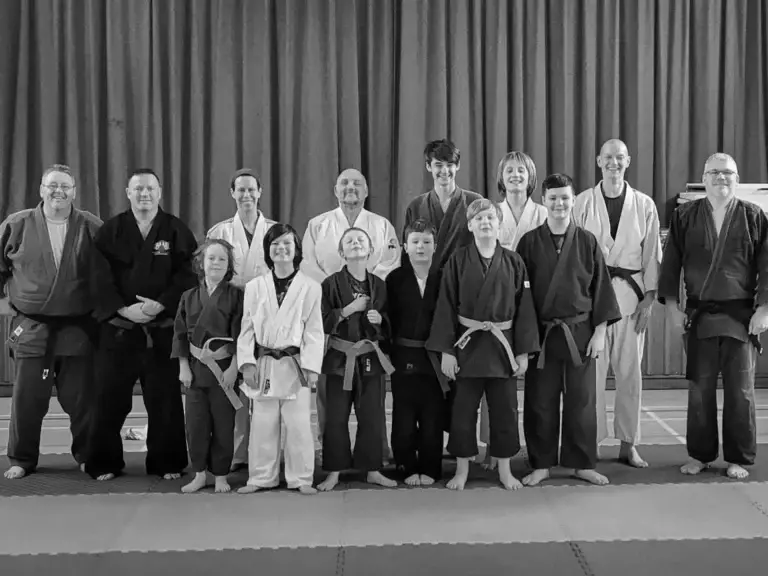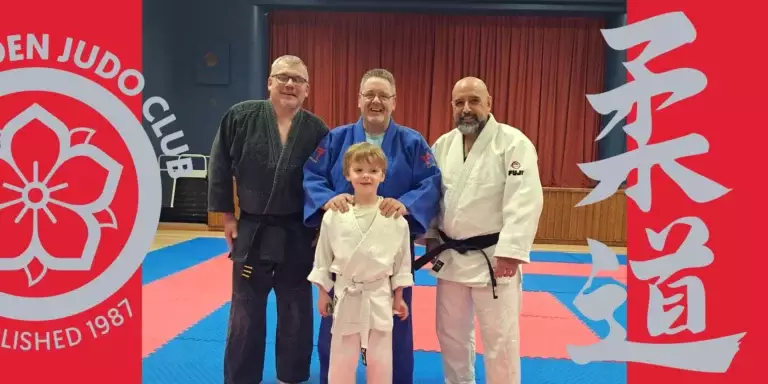TASTER SESSION: FIRST CLASS FREE | All you need to bring is a bottle of water and sportswear.

Beyond White and Blue: The Meaning of Judogi Colours
I often get asked about the meaning behind the colours we use in Judo. I have witnessed many heated debates between traditionalists and practitioners with more liberal views. I will try to explain briefly the origins of this and our stance as a club.
To do that, we’ll have to go back in time a little.
In traditional Japanese martial arts, the colour of the keikogi (training uniform) holds significant meaning. Rooted in budo — the martial way — these disciplines value respect, discipline, and the pursuit of self-mastery. Uniform colour, especially in older schools (koryu bujutsu), was typically white, symbolising purity, humility, and the blank canvas of a beginner’s mind (shoshin). This standard has continued in modern martial arts (gendai budo), such as Judo, Karate-do, and Aikido.
However, even in historical contexts, variations have existed — especially in arts like Kendo or Iaido, where darker uniforms (typically indigo or black) were worn, often to hide wear from practice or to reflect samurai aesthetics.
In traditional Japanese martial arts, the colour of the keikogi (training uniform) holds significant meaning. Rooted in budo — the martial way — these disciplines value respect, discipline, and the pursuit of self-mastery. Uniform colour, especially in older schools (koryu bujutsu), was typically white, symbolising purity, humility, and the blank canvas of a beginner’s mind (shoshin). This standard has continued in modern martial arts (gendai budo), such as Judo, Karate-do, and Aikido.
However, even in historical contexts, variations have existed — especially in arts like Kendo or Iaido, where darker uniforms (typically indigo or black) were worn, often to hide wear from practice or to reflect samurai aesthetics.
What uniform colours often mean in traditional Japanese martial arts
White: Universally associated with purity, innocence, and the beginner’s mindset. It symbolises humility and readiness to learn, widely used in Judo, Karate, Aikido, and many other arts.
Black: Often seen in Jujutsu, Iaido, and some Karate styles, black signifies maturity, mastery, and sometimes formality.
Indigo: In arts like Kendo and Iaido, indigo-dyed uniforms are traditional and connected to samurai-era clothing. Indigo’s deep blue-purple tone also symbolises perseverance and the warrior spirit.
These colours are not just aesthetic choices — they reflect each martial art’s philosophy, history, and practical needs.
Below is a brief list of martial arts and their corresponding colours, provided as a general example.
Black: Often seen in Jujutsu, Iaido, and some Karate styles, black signifies maturity, mastery, and sometimes formality.
Indigo: In arts like Kendo and Iaido, indigo-dyed uniforms are traditional and connected to samurai-era clothing. Indigo’s deep blue-purple tone also symbolises perseverance and the warrior spirit.
These colours are not just aesthetic choices — they reflect each martial art’s philosophy, history, and practical needs.
Below is a brief list of martial arts and their corresponding colours, provided as a general example.
| Martial Art | Uniform Colour | Hakama* Colour |
|---|---|---|
| Judo | White (standard), Blue (competition) | Rarely used |
| Koryū Jujutsu | White, Black | Sometimes black or blue |
| Aikido | White (beginner), Black (advanced) | Black or navy blue |
| Karate | White | None |
| Kendo | Indigo blue (standard) | Indigo blue (standard) |
| Iaido | White, Black, Navy Blue | Black, Navy Blue, White |
| Kyudo | White top | Black or Navy Hakama |
*What is a Hakama? It is a type of traditional, skirt-like pants worn over the uniform, featuring a distinct pleated design.
Keikogi colours in Judo
In Judo, the traditional judogi is white. Introduced by Judo founder Jigoro Kano in the late 19th century, the white judogi embodied principles of equality and humility. Later, blue judogi were adopted for competitive clarity, especially in international tournaments. This practical change made it easier for referees and spectators to distinguish between opponents; it was not a break from tradition, but a thoughtful evolution in service of the sport.
While white remains the norm in formal grading and competition, blue has become accepted — even standard — internationally. Today, both can be considered traditional within the context of modern Judo.
While white remains the norm in formal grading and competition, blue has become accepted — even standard — internationally. Today, both can be considered traditional within the context of modern Judo.
Todmorden Judo Approach: Tradition with an Open Mind
At Todmorden Judo Club, we honour the traditions and etiquette of Judo. We bow (rei) upon entering the mat and at the beginning and end of each session, showing respect for the dojo and our training partners. We study not only the different techniques but also the values that underpin the art. However, we also believe that budo evolves, just as it has always done.
We welcome judogi in white, blue, and other colours; and while we appreciate the symbolism behind white, we also see colour as a form of self-expression, inclusivity, and accessibility. For some members, especially younger judoka, a colourful judogi may spark joy, confidence, or a deeper personal connection with the art.
To us, permitting judogi colours beyond white isn’t a rejection of tradition, but a thoughtful application of Judo’s core principles: mutual benefit, efficient adaptation, and the encouragement of personal growth. This approach honours the spirit of Judo as a living, inclusive, and evolving martial art. Whether your judogi is white, black, or something in between, what matters most is the spirit in which you wear it.
We welcome judogi in white, blue, and other colours; and while we appreciate the symbolism behind white, we also see colour as a form of self-expression, inclusivity, and accessibility. For some members, especially younger judoka, a colourful judogi may spark joy, confidence, or a deeper personal connection with the art.
To us, permitting judogi colours beyond white isn’t a rejection of tradition, but a thoughtful application of Judo’s core principles: mutual benefit, efficient adaptation, and the encouragement of personal growth. This approach honours the spirit of Judo as a living, inclusive, and evolving martial art. Whether your judogi is white, black, or something in between, what matters most is the spirit in which you wear it.
As Jigoro Kano said, “It is not important to be better than someone else, but to be better than yesterday.”
Get Started Today!
Experience the joy of Judo in a welcoming and encouraging environment. Join us for a free session and see how Judo can transform your physical and mental well-being. We look forward to seeing you on the mat!






